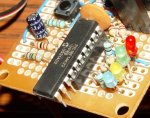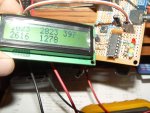Does anyone know if there are plans for smaller X2 chips? I would like to see a 14X2. A 20X2 works for replacing a 14M but looks a bit unprofessional.
See attached photo.
Or maybe the manufacturer could just add perforations across the chip between the pins and we could just snap off what we don't need. That way we could have:
20X2
18X2
16X2
14X2
12X2
10X2
08X2
What do ya'll think?
Dave E
See attached photo.
Or maybe the manufacturer could just add perforations across the chip between the pins and we could just snap off what we don't need. That way we could have:
20X2
18X2
16X2
14X2
12X2
10X2
08X2
What do ya'll think?
Dave E
Attachments
-
99.6 KB Views: 189




